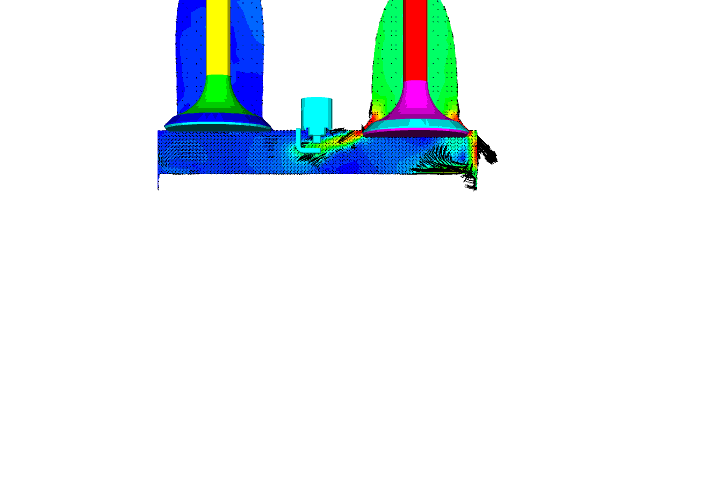Development and Application of Large-Eddy Simulation (LES) Models for Turbulent Flows:
|
|
In Large-Eddy Simulation (LES) of turbulent flows, large-scale motions are computed directly on the computational grid, while energy in the small-scale motions is approximated using subgrid-scale (SGS) model. Accuracy of an LES calculation depends on the performance of the SGS model. My research on LES involves development of new SGS models and quantification of LES model contribution to the the final solution.
|

|
|
Large-Eddy Simulation (LES) is a promising technique to model unsteady phenomenoa found in practical applications of turbulent flows. For example, in Internal Combustion Engines (ICE), LES can predict cycle-to-cycle variations in intake flow and combustion, a key for development of advanced engines. My research goal is to perform uncertainty quantified LES for practical applications.
|

|
Simulations of Gas-Phase Chemistry and Aerosol Dynamics in Turbulent Flows:
|
|
|
Most combustion systems emit fine aerosol particles into the atmosphere. Measurement of number and mass distributions of fine particles is important to understand
their health effects, and to develop emissions regulations.
It is found that measured distribution is dependent on the design and
flow configuration of the measurement device (dilution sampler) itself. We have performed turbulent flow simulations of aerosol dynamics to understand the formation and evolution of particles inside the dilution samplers.
|

|
|
Motor vehicles are well known as sources of ambient air pollutants.
Exposure to many of these pollutants has both acute
and chronic deleterious health effects. Most exposure to traffic-related pollution occurs in the near-roadway environment. Thus better quantification of concentration of
pollutants near roadways
is of great societal concern. My research goal is to understand the turbulent transport and physicochemical evolution of vehicle-related pollutants using computational fluid dynamics (CFD) models.
|

|



